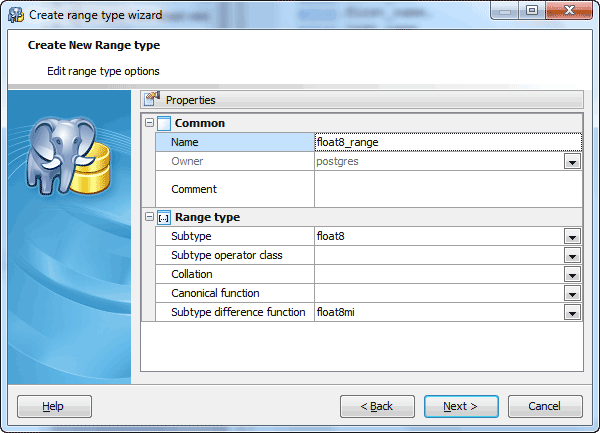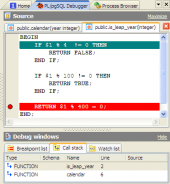PostgreSQL Maestro online Help
| Prev | Return to chapter overview | Next |
Create Range Type Wizard
Create Range Type Wizard guides you through the process of creating a new type.
The basic principles of Create Object Wizards in PostgreSQL Maestro are explained in a separate topic. Below you will find a description of wizard steps that are unique for the current object.
To create a range type, specify the Name of the new type and the Subtype that the range type will represent ranges of, select the type's Owner and enter an optional text to describe the type as Comment.
The range type's subtype can be any type with an associated b-tree operator class (to determine the ordering of values for the range type). Normally the subtype's default b-tree operator class is used to determine ordering.
To use a non-default operator class, specify its name with Subtype operator class.
If the subtype is collatable, and you want to use a non-default collation in the range's ordering, specify the desired collation with the Collation option.
The optional Canonical function must take one argument of the range type being defined, and return a value of the same type. This is used to convert range values to a canonical form, when applicable. It must be defined before the range type can be declared.
The optional Subtype difference function function must take two values of the subtype type as argument, and return a double precision value representing the difference between the two given values. While this is optional, providing it allows much greater efficiency of GiST indexes on columns of the range type.

| Prev | Return to chapter overview | Next |





 Download
Download Buy
Buy
